Hydrotherapy
What is a Hydrotherapy?
Hydrotherapy, a therapeutic approach, to the therapeutic use of water, has been practiced for centuries across various cultures. Rooted in the belief that water can promote healing and wellness, hydrotherapy encompasses a wide range of techniques, from hot baths and steam rooms to cold water plunges and water exercises.
Any activity done in water to aid in rehabilitation and recovery from, say, hard work or a serious injury, is called hydrotherapy, often known as aquatherapy. There have been thousands of years of use for this therapy. It is a common form of exercise in warm water used to treat musculoskeletal and neurologic disorders in people. They give someone the chance to practice making balanced, well-coordinated motions.
This therapy aims to relax and strengthen muscles, increase joint motion, lessen pain, and increase muscular coordination and balance in certain populations.
Hydrotherapy is a common tool used by physical therapists in the context of rehabilitation. Older people who wish to participate in exercise programs without worrying about falling may discover that water offers a safe, encouraging, and low-risk training environment. Client satisfaction and commitment to this type of exercise are hence frequently high. Additionally, the social environment of the sessions frequently increases the therapeutic effects.
Close observation of infection control and hygiene is required.
History
Water was used therapeutically in the ancient Greek, Roman, and Egyptian cultures. Egyptian royalty bathed in essential oils and flowers, whereas the Roman populace used shared public baths. Hippocrates advised taking a spring water bath when ill. China and Japan are two more countries that are well-known for having a lengthy history of hydrotherapy, with the latter being centered mostly upon Japanese hot springs. These histories lead up to the Roman thermae in several cases.
Modern revival
With the expansion and advancement of modern medical procedures in the 18th and 19th centuries, hydrotherapy gained popularity. The development of hydrotherapy was thought to be a more individualized form of medical treatment that did not necessarily present patients with the alienating scientific language that modern developments in medical treatment entailed. It was felt that as traditional medical practice became more professional in terms of how doctors operated, medical treatment became less personalized.
1700–1810
The 18th century saw the publication of two English books on the therapeutic applications of water, which helped to establish the new trend of hydrotherapy. One of them was written by the Lichfield physician Sir John Floyer, who looked into the origins of cold bathing and wrote a book on the topic in 1702 after being intrigued by the nearby peasantry’s usage of specific springs for therapeutic purposes.
In a matter of years, the book saw six editions, and Dr. J. S. Hahn of Silesia extensively referenced the German translation of this work in his 1738 book On the Healing Virtues of Cold Water, Inwardly and Outwardly Applied, as Proved by Experience.
The other piece was a 1797 book by Liverpool-based physician Dr. James Currie about the application of hot and cold water therapy for fever and other ailments. His fourth edition was released in 1805, not long before he passed away. Additionally, Michaelis (1801) and Hegewisch (1807) translated it into German.
It was very well-liked and gave the topic its first scientific foundation. Since then, Hahn’s writings have sparked a great deal of passion among his compatriots, leading to the formation of societies across the nation to support the medicinal and dietetic use of water. In 1804, Professor E.F.C. Oertel of Anspach republished Hahn’s writings and accelerated the popular movement by unequivocally endorsing water drinking as a cure for all ailments.
In the 1800s, the main concept behind hydropathy was the ability to create a “crisis.” It was believed that water seeped into the skin’s flaws, sores, and fissures, which were receptacles for unclean liquids. According to the belief that health is the body’s natural state, pus would form on the skin’s surface when particles were flushed out of these areas by adding pure water.
This pus emerged in what was referred to as a crisis, and it did so by a variety of means. Sweating, the dip in the bath, the half bath, the head bath, the sitting bath, and the douche bath were some of these treatments.
Vincenz Priessnitz (1799–1851)
Growing up, Vincenz Priessnitz—the son of a peasant farmer—saw a wounded deer getting its wound cleaned in a pond close to his house. He would see the animal again over the next few days, and finally, the wound would heal. Priessnitz broke three ribs when he was run over by a horse carriage as he was tending to it later in his teenage years. He was informed by a doctor that they would never recover.
Priessnitz made the decision to attempt self-healing and bandaged his wounds with moist clothes. After roughly a year of changing his bandages every day and consuming a lot of water, his damaged ribs had healed.
Priessnitz became well-known in his community very soon and was sought-after as a doctor.
In 1826, Priessnitz became the leader of a hydropathy clinic in Gräfenberg. Due to his remarkable success, by 1840, he was seeing 1600 patients at his clinic, including notable military officers and high society, as well as many other medical professionals.
The duration of treatment varies in Priessnitz’s clinic. A significant portion of his hypothesis focused on triggering the aforementioned crisis, which may transpire in less time or after three to four years. Living a simple lifestyle was a major component of the treatment, which made sense given the basic nature of hydropathy.
Changing one’s diet to just extremely hard foods like jerky and bread and, of course, drinking a lot of water were among these lifestyle modifications. In addition, Priessnitz’s treatments involved a lot of less intense activity, primarily walking. In the end, Priessnitz’s clinic was wildly successful, and he became well-known throughout the Western world. His methods even had an impact on the hydropathy that spread to America from abroad.
Sebastian Kneipp (1821–1897)
German-born Sebastian Kneipp saw his contribution to hydropathy as carrying on Priessnitz’s research. Kneipp used hydropathy himself, although he was much more gentle than most. He voiced concern that the conventional hydropathic methods being used were “too violent or too frequent” and that the patient might suffer physical or psychological damage as a result of these techniques.
Kneipp’s approach was more comprehensive than Priessnitz’s, treating patients’ emotional and mental problems in addition to their physical ailments.
A balanced diet, massages, medicinal herbs, and “regulative therapy to seek inner balance” are the four additional tenets that Kneipp introduced to the therapy. Kneipp saw a very basic practice from a very basic perspective. He believed that the main objectives of hydropathy were to clean the body of toxins and poisons and to strengthen the constitution.
These simplistic explanations of hydropathy’s mechanisms suggested that he had no formal medical training at all. Yet, or maybe even because of, his lack of medical expertise, Kneipp did have a highly successful medical practice.
As previously said, the upper classes of the medical field were starting to make some people uneasy around traditional doctors. The general public found it challenging to understand the new terminology and methods that doctors were employing.
Despite his lack of professional training, all of his published writings and directions are explained in simple terms, making them very enticing to a patient dissatisfied with the direction traditional medicine was headed.
One important reason for the rise of hydrotherapy’s popularity was its affordability for at-home use. The development of hydrotherapy, also known as “hydropathy” at the time, was thus partially influenced by two interrelated domains: “the hydro and the home.
When Vincenz Priessnitz (1799–1851), a farmer from Gräfenberg in Silesia, which was then a part of the Austrian Empire, started his public career in the paternal homestead, which was expanded to accommodate the growing number of people drawn by his cures, hydrotherapy became a recognized medical tool around 1829.
Medical personnel were noticeable in their numbers in Gräfenberg, where the reputation of Priessnitz drew people from all walks of life and many nations. Some were drawn by curiosity, some by the need for knowledge, but most were drawn by the prospect of finding a solution for illnesses that had so far proven incurable.
Numerous accounts of Priessnitz’s experiences at Gräfenberg were made public; they were all largely positive toward his claims and, in some cases, very excited about his brilliance and intelligence.
Spread of hydrotherapy
It was Captain R. T. Claridge who brought hydropathy to Britain, first in London in 1842 and then in 1843 through lecture tours in Ireland and Scotland. During June, July, and August of 1843, he conducted a 10-week tour of Ireland, stopping in Limerick, Cork, Wexford, Dublin, and Belfast. He then gave two lectures in Glasgow.
There weren’t many other Englishmen who went to Graefenberg before Claridge. Among these was Dr. James Wilson, who in 1842 founded and ran a water cure facility at Malvern with Dr. James Manby Gully.
Wilson and Gully released a brochure for their Water Cure Establishment along with a comparison of the effectiveness of medicine and water cures in 1843. The publication included reports of several cases treated at Malvern. Gully then went on to fully detail the therapies offered at the clinic in The Water Cure in Chronic Disease, which was published in 1846.
As the water cure establishment gained popularity, Wilson and Gully rose to prominence on a national level. At Malvern, two further clinics were opened.
Charles Darwin, Charles Dickens, Thomas Carlyle, Florence Nightingale, Lord Tennyson, and Samuel Wilberforce were among the well-known patients. His stature brought him criticism as well. The British Medical Association’s founder and physician, Sir Charles Hastings, was a vocal opponent of hydropathy in general and Gully in particular.
Hydropathics were constructed throughout Britain starting in the 1840s. Many of these were once little hospitals that could only accommodate dozens of patients.
The typical hydropathic establishment had developed into a more significant try by the later nineteenth century, treating thousands of patients annually for weeks at a time in a large purpose-built building with luxurious facilities like baths and recreation rooms, all under the supervision of staff members who were fully qualified and trained medical professionals.
Hydropathic establishments quickly proliferated in Malvern, England, as well as in Germany, France, and America. There was a lot of hostility between the new and the old practices. Both parties poured harsh criticism on one another, and a legal case that resulted in a royal commission of inquiry did little more than raise public awareness of Priessnitz and his system.
Growing acceptance quickly overshadowed skepticism about the novel approach’s ability to treat mild illnesses and assist those with more severe injuries. The primary focus of hydropathists’ research was on chronic invalids who could withstand a demanding regimen and the severity of an unrestrained crisis.
John Smedley, a Derbyshire manufacturer, was the first to accurately recognize the need for a radical adaptation to the former class. He practiced a milder form of hydropathy among his workers and, in 1852, started a new era in the history of the class by founding a counterpart development at Matlock that was similar to the one at Gräfenberg.
Dr. Wilson Fox brought the cooling bath to England after Ernst Brand (1827–1897) of Berlin, Raljen and Theodor von Jürgensen of Kiel, and Karl Liebermeister of Basel used it in abdominal typhus with remarkable results between 1860 and 1870.
The cooling bath was a common treatment for hyperpyrexia during the Franco-German War, sometimes used in conjunction with quinine.
Spread to the United States
Joel Shew and Russell Thacher Trall founded the first hydropathic facility in the United States in the 1840s. In the 1850s, Dr. Charles Munde also founded the first hydrotherapy facilities. In addition, Trall co-edited the journal Water Cure.
Along with a plethora of books and journals, such as the New York Water Cure Journal, which had “attained an extent of circulation equaled by few monthlies in the world,” by 1850. By 1855, some people were attempting to assess the efficacy of popular treatments.
John Harvey Kellogg used hydrotherapy at Battle Creek Sanitarium, which opened in 1866 after it was first introduced to the United States. There, he worked to strengthen the scientific basis for the practice. Among the other well-known hydropathic establishments of the time was the Cleveland Water Cure Establishment, established in 1848 and successfully running for 20 years until being purchased by an organization and converted into an orphanage.
At its peak, the United States had over 200 water-cure enterprises, the majority of which were in the northeast. While a few of them persisted into the postbellum era, a number of them, including those in Scott (Cortland County), Elmira, Clifton Springs, and Dansville, did not.
Subsequent developments
The British Medical Journal said in November 1881 that hydropathy was a “particular case”—a particular application of the universal principles of thermodynamics. This refers to “the application of heat and cold in general” through hydropathy in the context of physiology. Another author said in 1883 that “Not, be it observed, that hydropathy is a water treatment after all, but that water is the medium for the application of heat and cold to the body”.
In the 19th and 20th centuries, hydrotherapy was used to treat mental illness[53] and, prior to World War II, many types of hydrotherapy were employed to treat alcoholism. According to the foundational text of Alcoholics Anonymous, Bill Wilson, one of the fellowship’s founders, had hydrotherapy treatment for his alcoholism in the early 1930s.
Society and culture
A type of tourism emerged as a result of the expansion of hydrotherapy and numerous hydropathic enterprises in Europe and the United Kingdom. One book, at least, included English, Scottish, Irish, and European establishments that were appropriate for treating each particular ailment, while another, though it covered other areas as well, concentrated mostly on German spas and hydropathic establishments.
Although many swimming pools were available year-round, physicians warned patients not to visit before May or stay after October. English tourists typically come in May for the baths and leave again in September since they much like the chilly weather. Although they visit all year round, Americans support the summer.
The months of July and August are the most crowded and stylish.” Through the 19th and 20th centuries, spa tourism and different forms of hydrotherapy were highly popular in Europe, where “many million people spend time at a spa each year in France, Italy, and Germany”.
Mark Twain called the experience “so enjoyable that if I hadn’t had a disease I would have borrowed one just to have a pretext for going on” when he learned during a trip to Europe in 1891 that soaking in the spring water at Aix-les-Bains relieved his rheumatism.
Similar types of spa tourism have been popular in Europe and the UK before. In fact,
Since the seventeenth century, several medical writers in Europe have continuously pushed the use of water as a treatment for fevers and other illnesses. Taking to the sea became a popular pastime for those with money in the eighteenth century as they went to resorts across Britain and Europe as a way to recover from the negative effects of excessive consumption.
During the height of the British spa period, the primary forms of treatment were walking along the waterfront, taking a bath, and repeatedly drinking mineral waters that had an unpleasant taste.
An establishment that provides hydropathic therapy is known as a hydropathic establishment. They are typically constructed in resort towns with naturally occurring hot or mineral-rich water.
In the late 20th century, a number of hydropathic institutions completely moved their activities from therapeutic to tourist hotels, all the while keeping the term “Hydro.” Scotland is home to a number of notable examples, including those at Seamill, Peebles, and Crieff.
Animal hydrotherapy
Canine hydrotherapy is a type of hydrotherapy used to help dogs with pre-operative or general fitness, as well as chronic ailment management and post-operative rehabilitation.
Physical properties of water
Water possesses certain physical characteristics, such as mass, weight, density, relative density, gravity, hydrostatic pressure, surface tension, refraction, and reflection, in common with other forms of matter.
The basic rules of gravity and hydrostatic pressure are the most important for a physical therapist to comprehend and use when providing Aquatherapy. The buoyant force of the water and the hydrostatic pressure slow people down. Additional sensory information related to the water’s viscosity aids in regulating when muscles should be activated. The sensation of weightlessness is produced by the combination of the lateral pressure and buoyancy effects.
Buoyancy
The force that operates in opposition to gravity and is felt as an upward motion is known as buoyancy. Consequently, a body submerged in water experiences two opposing forces. The body is maintained in stable equilibrium when the weight of the floating body and the weight of the liquid displaced is equal and the centers of gravity and buoyancy are in the same vertical line.
The body will roll over until it achieves a point of stable equilibrium if the two forces acting on it are not in the same vertical line.
Hydrostatic pressure
Fluid molecules press against every portion of a submerged body’s surface. According to Pascal’s law, at a given depth, fluid pressure is applied uniformly throughout the surface area of an immersed body at rest. Pressure rose as the fluid’s depth and density both increased.
This indicates that if activities are performed well below the water’s surface, where the increased pressure can be employed, edema will be alleviated more readily.
Blood pressure (BP) increases in the area surrounding the heart and decreases peripherally as a result of the hydrostatic pressure exerted on the body’s exterior. This should be taken into consideration since it may result in issues for individuals with Coronary Artery Disease (CAD) and Chronic Heart Failure (CHF). The level of change in the above-stated elements increases with depth.
Surface Tension
The fluid’s surface acts as a membrane when it is under tension. The main significance of this property is that the tension is directly connected to the object’s size. Therefore, it takes more work to move an object or body part above water than it does below. Floaters and other similar devices can help achieve this.
Viscosity
The resistance to flow resulting from intermolecular friction in a liquid is known as its viscosity. This resistance is directly correlated with the viscosity of the liquid that the movement is moving through. The main discovery of this feature is that resistance increases as movement velocity increases and resistance increases as the surface area of an object or physical component increases.
Physiological Effects
The physiological effects of water therapy combine the benefits of exercise and the heated pool water. The type and intensity of the exercise, the duration of the treatment, and the water’s temperature all affect how much of an impact there is.
Exercise on dry land has physiological consequences that are comparable to those of exercise in water. With every chemical shift that takes place during a contraction, heat is created, increasing the blood supply to the working muscles and raising their temperature. The muscles have a higher metabolism, which raises their need for oxygen and increases their output of carbon dioxide.
These modifications increase the comparable changes caused by the water’s heat and both add to the overall outcome. Muscle power rises and joint range of motion is either maintained or expanded.
The physiological effects during the immersion are less localized and comparable to those caused by any other type of heat. Because the body absorbs heat from the water and from all the contracting muscles used in the exercises, an increase in body temperature is expected.
The superficial blood vessels enlarge and the peripheral blood supply rises when the skin heats up. The temperature of the underlying tissues rises due to convection, which is caused by the hot blood passing through these vessels.
The water’s comparatively low temperature lessens the sensitivity of sensory nerve endings, and as the blood flows through the muscles, the tone of the muscles will decrease.
Therapeutic Effects
- Relieve pain and muscle spasms
- To gain relaxation
- To maintain or increase the range of joint movement
- To re-educate paralyzed muscles
- to build the power and endurance of weak muscles and to strengthen them.
- to promote walking and other relaxing and practical pursuits.
- To improve balance and coordination
- To improve circulation ( trophic condition of the skin )
- To improve the patient’s morale by encouraging and empowering him to complete his workouts.
- By activating heat receptors and mechanoreceptors, the warmth of water inhibits nociception and affects spinal segmental processes.
- Warm water stimulates blood flow positively, which leads to muscle relaxation.
- the hydrostatic effect may relieve pain by reducing peripheral edema and by dampening the sympathetic nervous system activity.
According to a study by Ahmed SAMHAN et al., children with juvenile dermatomyositis may benefit more from supervised aquatic-based activities than from land-based ones in terms of improved muscle strength, weariness, life satisfaction, and skin disease activity.
Clinical Contraindications
Serious Contraindications
- Cardiovascular disease
- cardiopulmonary disease
- Diabetic
- Balance disorder
- History of CVA, Epilepsy
- Incontinence
- a cold
- Influenza
- Fever
- skin conditions
- Chemical allergies (Chlorine)
Absolute Contraindications
- Contagious diseases
- Hepatitis
- Tracheotomy
- Urinary tract infection
- Serious Epilepsy
- Urinary incontinence
- Open Wounds
- Recently Surgery
Difference Between Aquatic Exercise and Balneotherapy
Balneotherapy, often known as “Spa therapy,” is hydrotherapy with no physical activity. It is widely used to treat all kinds of arthritis and is commonly used in alternative medicine as a disease cure.
Studies describing the differences in therapeutic effects between hydrotherapy and balneotherapy without exercise are scarce. The results of the review paper “Effectiveness of Aquatic Exercise and Balneotherapy” indicate that pain reduction, improved function, quality of life, and mental health were all positively impacted by aquatic exercise, although little.
For the treatment of musculoskeletal disorders, activity in the water is more beneficial than passive immersion when compared to balneotherapy. As there are no long-term consequences, regular participation in water activities is required to maintain the disease’s stability.
The particular effect of balneotherapy on musculoskeletal disorders is unclear due to the low methodological quality of the studies involved, which makes it challenging to pinpoint each patient’s unique response to this treatment.
Examples of Alternative Methods of Hydrotherapy
The “WATSU® Method”
A hybrid of Shiatsu and Aquatherapy, it’s also known as “water Shiatsu.” Stretching the body in the comforting, calming medium of warm water is the foundation of WATSU®. During this therapy, the mental component is just as important as the physical component. By supplying the energy flow, this technique provides a broad relaxing, and calming impact that releases tense muscles and stimulates all of the body’s systems and organs.
The “Bad Ragaz Ring Method”
This is a proprioceptive neuromuscular facilitation-based aquatic therapeutic method. The Bad Ragaz Ring method supports the patient in a vertical supine posture by using floating rings at the neck, pelvis, knees, and/or ankles. This is a form of resistance training that strengthens and mobilizes using water that is 33 degrees Celsius. Let the therapist use greater force; the patient should not exert much force. The Bad Ragaz Ring should be utilized in conjunction with other tactics meant to increase effort and involvement. The Halliwick technique is one such method.
The “Feldenkrais Method”
This approach encourages people to learn about the quality of their motions and how to move smoothly, efficiently, and with ease.
The “Halliwick Method”
This approach adopts a holistic perspective, utilizing Aquatherapy as a learning tool to empower individuals, especially those with physical or learning challenges, to move autonomously and participate in group activities involving water.
The “Burdenko Method”
A type of hydrotherapy aimed to target the six principles of fitness: speed, strength, endurance, balance, coordination, and flexibility. It is marketed as an excellent means of healing from wounds or surgery.
Uses
It is possible to limit the applications of water therapy to those of aquatic therapy, physical therapy, and cleansing agents. That being said, its long-standing use has also been as a vehicle for delivering heat and cold to the body. Numerous approaches and techniques are used in hydrotherapy, many of which use water as a medium to promote thermoregulatory processes for therapeutic effect.
Because shower-based hydrotherapy treatments are easier to clean and less likely to cause contamination, they are being employed more often than full-immersion approaches. Hydrotherapy is a technique that can be used to treat wounds when tissue removal is required. It works by performing selective mechanical debridement. Therapeutic irrigation using suction and targeted wound irrigation are two examples of this.
Technique
- Packings, general and local (i.e. Liniment);
- Hot air and steam baths;
- General baths;
- Treadmills
- Sitz (sitting), spinal, head, and foot baths;
- Bandages or compresses, wet and dry; also;
- Water potations, rubbings, stupes, poultices and fermentations.
Several types of equipment can be used in hydrotherapy, which involves submerging all or part of the body in water:
Immersion tanks for the entire body (a “Hubbard tank” is a huge size)
Leg, hip, and arm vortex
Water tanks have utilized whirling water movement, powered by mechanical pumps, at least since the 1940s. The phrases “hot tub” and “spa” have been used to sell similar technologies for recreational purposes.
Whirlpool baths are sometimes avoided while treating wounds because the water flow causes harm to all tissue, not only the tissue that needs to be removed.
Hot-air baths
Many titles from the time speak to the fact that hydrotherapy, especially as advocated during its Victorian rebirth, was frequently linked to the use of cold water. But even at the height of this popular revival, not all therapists restricted their hydrotherapy practice to cold water.
However, the specific use of heat was frequently connected to Turkish baths in Victorian times. Richard Barter eagerly accepted these after David Urquhart, upon his return from the East in the 1850s, brought them to England. Together with the morning tub and the widespread habit of drinking water, the Turkish bath became a public institution and is the most notable of hydropathy’s numerous contributions to public health.
Aquatic exercise
Low-impact physical activity, known as aquatic exercise, is usually performed in a pool with specialized equipment. It enables individuals to increase heart rate and engage in muscle activity without placing undue strain on their joints.
These workout regimens are appropriate for older adults who may be more likely to fall or who simply find it simpler to work out in a low-impact setting, as well as those who have fibromyalgia or arthritis.
Sitz bath
A shallow bath with either warm or cold water is called a sitz bath. Practitioners may advise sitz baths as a way to relieve problems like hemorrhoids or cramping.
Wraps, compresses, and fomentation
Hydrotherapy also includes the use of warm, cool, or hot water for compresses and wraps. These could help treatment and offer focused relief from minor pain.
Saunas
Saunas can include both wet and dry heat saunas, as well as cool or refrigerated saunas, depending on the definition. These require sitting in a temperature-controlled space with either dry or moist air.
Water circuit therapy
In order to improve circulation and lessen symptoms, water circuit therapy, also known as contrast hydrotherapy, involves alternating between warm and cold water in several hydrotherapy settings.
Depending on the practitioner and the patient, the circuit may differ significantly, although it may incorporate a number of methods:
- warm baths
- wet or dry saunas
- cold plunges
- cool baths
Immersion therapies
- warm baths
- cool baths
- cold plunges
- sitz baths
- hot tubs with jet massages
- whirlpool baths
Who needs hydrotherapy?
In theory, no one requires hydrotherapy. It’s not a recommended course of treatment for any illness, disease, or symptom. Experts are determining what it is and isn’t effective in treating as it is explored more thoroughly.
Discuss hydrotherapy with your healthcare physician if it sounds like something you’d be interested in. Find out which kinds of aquatic therapy are best for you and what you should know before beginning.
Hydrotherapy for burns
Those with burns may benefit from hydrotherapy. Water jets are a safe and efficient approach to treating burns and wounds. Using pressured water to treat burns can also aid in lowering:
- Pain.
- Redness.
- Scarring.
- Permanent discoloration.
Hydrotherapy and pregnancy
Pregnant women have been proven to benefit from hydrotherapy. According to one study, regular hydrotherapy sessions may help pregnant women with high blood pressure lower their risk of issues like preeclampsia.
Pregnant women may opt to give birth in warm water, which can improve comfort and reduce pain and anxiety.
Discuss your preferences for a pregnancy and labor plan with your healthcare practitioner
Hydrotherapy and weight loss
Weight reduction cannot be induced, stimulated, or improved by hydrotherapy alone. On the other hand, fitness regimens that incorporate swimming exercises can aid in weight loss and enhance general well-being.
When To Call the Doctor
When should I see my healthcare provider?
Consult your provider as soon as possible if you observe any of the following:
- New or worsening pain.
- Swelling.
- Discoloration.
- Rashes or hives.
Is hydrotherapy right for you?
There are numerous justifications for experimenting with hydrotherapy. In addition to helping with anxiety and sadness, it can increase range of motion and, if you’re in a group or class, have positive social effects.
Conclusion
In summary, hydrotherapy is a flexible and powerful method for enhancing both physical and mental health. It includes the therapeutic use of water for pain management, recovery, and relaxation. Hydrotherapy can aid with pain relief, inflammation reduction, circulation improvement, and muscle relaxation. It can be used with hot tubs, whirlpools, aquatic workouts, and underwater massage.
It is a useful supplement to traditional treatments for ailments like arthritis, fibromyalgia, and musculoskeletal injuries because of its accessibility, minimal risk of side effects, and applicability to a variety of demographics. Hydrotherapy is still an effective and popular modality in healthcare and wellness settings, even though more research is required to completely understand its workings and maximize its uses.
FAQs
What is hydrotherapy used for?
Hydrotherapy: What is it? Any kind of water therapy is known as hydrotherapy. For example, it can be used as a treatment for long-term diseases like fibromyalgia and arthritis, or for transient skin problems like burns and septic ulcers.
How to do hydrotherapy at home?
Put some bath salt in the water, fill it to a temperature of 98 to 100 degrees Fahrenheit, and soak for around half an hour. Make sure to create a relaxing environment if you are interested in relaxing more. You can use essential oils to scent the space and play music or listen to nature sounds.
What is the difference between hydrotherapy and aquatic therapy?
Aquatic therapy is a physical therapy (PT) exercise program designed to reduce pain and stress on weight-bearing joints. Hydrotherapy is a specific type of physical therapy in which water is used to produce resistance, support, and other effects that are not possible to achieve outside of the water. What is hydrotherapy is a specific type of physical therapy in which water is used to produce resistance, support, and other effects that are not possible to achieve outside of the water.
What is the basic principle of hydrotherapy?
A number of significant bioengineering concepts form the foundation of hydrotherapy, enabling the creation of water exercise equipment, methods, and regimens. Numerous forces (buoyancy, drag, inertia), hydrostatic pressure, and the specific heat of water are all involved in these principles.
Is hydrotherapy a physiotherapy?
A type of physical therapy called hydrotherapy is administered in a warm swimming pool that is typically between 32 and 35 degrees Celsius.
What are the indications of hydrotherapy?
Limited range of motion.
Pain.
Sensory disorders.
Neurological conditions.
Developmental disorders.
Weakness.
Poor motor coordination.
Spatial issues.
How successful is hydrotherapy?
Advantages of Hydrotherapy for Sports People
Heat therapy has been demonstrated to speed up cardiovascular recovery after exercise and be useful in restoring muscle strength, even if opinions on the effects of cold and contrast water immersion on healing timeframes and recovery are still up for debate.
Is hydrotherapy hot or cold?
Studies have indicated that cold water immersion therapy is more effective than hot water immersion in aiding workout recovery. On the other hand, a lot of athletes use contrast treatment to heal. It has been demonstrated that contrast wet therapy is more successful than passive rehabilitation.
When not to use hydrotherapy?
Incontinence.
Contagious diseases.
Severe epilepsy.
Recent surgery.
Open wounds.
Urinary tract infection.
Tracheotomy.
Recent chemotherapy.
What is hydrotherapy good for?
however, how many of your joints have been damaged, aquatic therapy may be beneficial. It can be used for other types of arthritis as well, but it’s often used for joint replacement surgery patients, those with back pain, psoriatic arthritis, ankylosing spondylitis, and osteoarthritis.
References
- Professional, C. C. M. (n.d.). Hydrotherapy. Cleveland Clinic. https://my.clevelandclinic.org/health/treatments/23137-hydrotherapy
- Johnson, J. (2020, September 30). Hydrotherapy: Types of treatments. https://www.medicalnewstoday.com/articles/hydrotherapy
- Hydrotherapy. (2024, March 24). Wikipedia. https://en.wikipedia.org/wiki/Hydrotherapy
- Aquatherapy. (n.d.). Physiopedia. https://www.physio-pedia.com/Aquatherapy

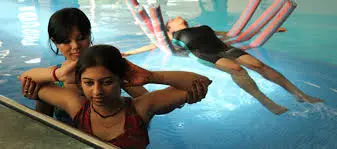
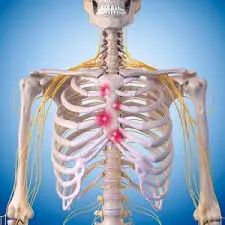
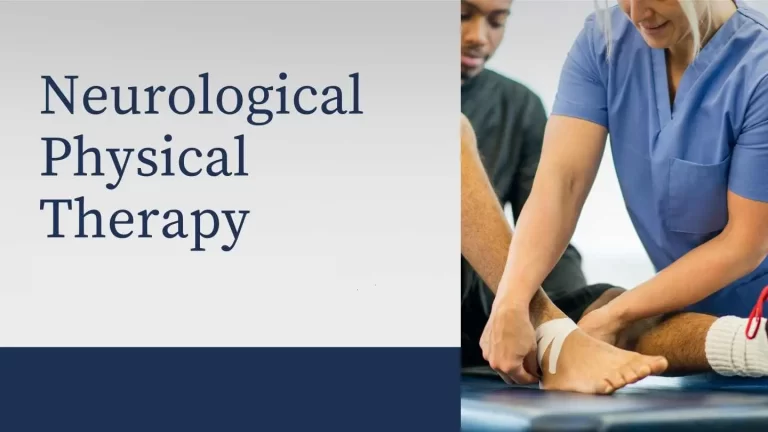
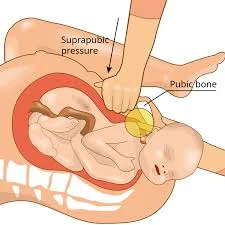
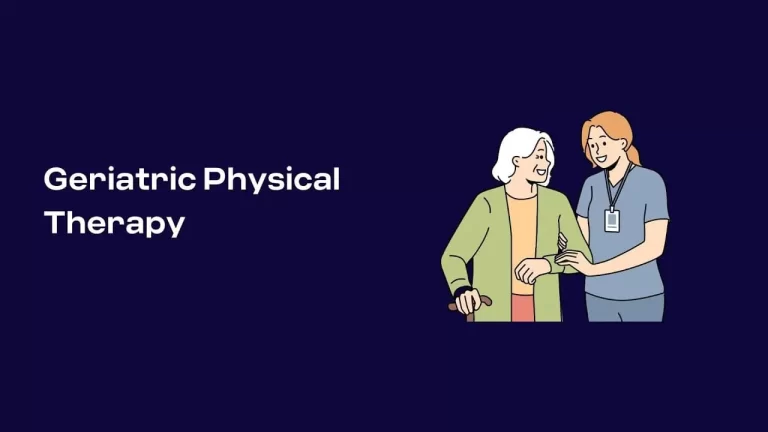
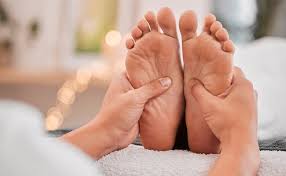
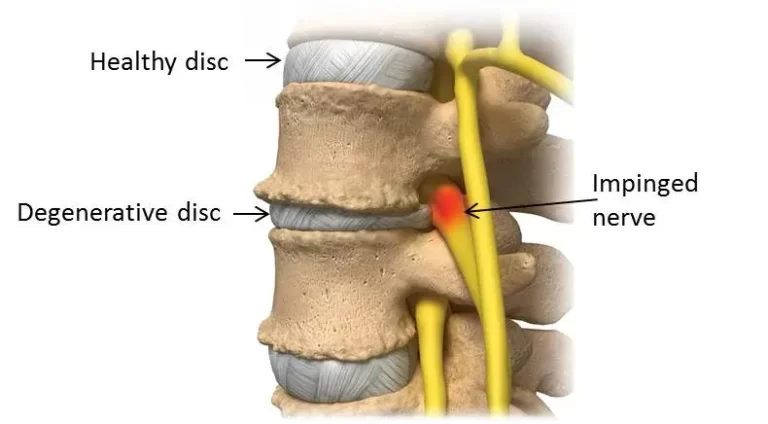
3 Comments